
17-12-2025 18:35
 Michel Hairaud
Michel Hairaud
Bonjour à tous/Hi to everyone I am passing along

15-12-2025 15:48
 Danny Newman
Danny Newman
Melanospora cf. lagenaria on old, rotting, fallen

15-12-2025 15:54
 Johan Boonefaes
Johan Boonefaes
Unknown anamorph found on the ground in coastal sa

15-12-2025 21:11
 Hardware Tony
Hardware Tony
Small clavate hairs, negative croziers and IKI bb

15-12-2025 07:09
 Danny Newman
Danny Newman
indet. Rutstroemiaceae sp. on unk. fallen leavesMc

15-12-2025 07:05
 Danny Newman
Danny Newman
Pseudosclerococcum golindoi (det: Zotto)near Cosb

15-12-2025 11:49
 Danny Newman
Danny Newman
ITS sequences from the following two collections B

15-12-2025 12:34
 Danny Newman
Danny Newman
indet. Rhytismataceae on oak leafnear Purchase Roa
Bonjour !
Voici un disco de Québec. Nous croyons à un Bulgariella et plutôt nigrita.
Merci, Roland
Voici les données :
Date de récolte : 03 / 07 / 2012
Substrat : feuillu en décomposition
Asques à 8 spores unisériées, cylindriques, progressivement élargis vers l'apex, non operculés, avec crochet à la base, amyloïdes, jusqu'à 140 x 11 µm
Paraphyses cylindriques presque filiformes, élargies et souvent recourbées à l'apex, septées, à contenu granuleux noir en H2O et pourpre en KOH sur le tiers supérieur, 135-140 x 2-4 um, ne dépassant pas les asques
Spores ellipsoïdes, lisses, à paroi modérément épaissie et rouge, avec plusieurs guttules, brun roux à brun olivâtre assez foncé, 10,5-13,3 x 6,6-8,7 µm, 11,9 x 7,7 µm en moyenne, Q moyen = 1,6
Excipulum ectal en textura porrecta (?), formé d'hyphes de 2,38 à 3,97 µm de
diam.
Excipulum ental et medulla en textura epidermoides, 19,8 x 5,7 µm en moyenne
Revêtement externe formé de cellules subglobuleuses à ± clavées, pigmentées de brun, courtes, 13,9 x 7,8 µm en moyenne
Poils externes non observés
Les trois photo micro à part de la planche sont : extrémité d'asque en Lugol, paraphyses, excipulum ectal.

Zotto
Je ne connais pas de sources qui parlent de B. nigrita à part IF.
Existe-il d'autres espèces dans ce genre ?
Vous avez publié sur cette espèce.
Auriez-vous un PDF à m'expédier, s.v.p. ?
Et une clé de ces espèces s'il y a lieu ?
Je vous remercie et vous salue !
Roland

IF lists a number of taxa, but I never heard of them.
In Mycologist 5: 146 (1991) there is a profile on B. pulla, but I do not have a copy. Also Beaton, TBMS 67: 449 (1976) treats the species from Australia.
Zotto
I saw it.
Thank you Hans !
Roland
cheers


I only fear that it will not clarify the dubious identity of B. nigrita.
Zotto

5. P. pulla, subgelatinosa, sessilis, glabra, junior plana integerrima olivaceo-nigra, dein convexa aterrima, disco pruinoso-pulverulento. Fungus admodum memorabilis, Bulgaris analogus, sed distinctissimus. Gregaria, carnoso-gelatinosa, sublenta, crassiuscula, etiam intus atra. Junior ½-1 lin. lata, marginata, dein 3-4 lin. uscue & saepe ins eries biunciales confluit, e mutuam pressionem irregularis & undulata. Asci teneus. Sporidia nigro-aeruginosa. Subiculum nullum. Ad lignum dejectum fabrefactum mucidum Pini silvestris, non frequens, quot annis tamen magna, habui copiam. Aut. (v. v.) B. P. nigro-olivacea, sessilis, cupula pianissima, margine subcrenulato, subiculo e filis radiatis nigros insidens. [Fries, Syst. Mycol. 2 (1): 160.1822]
In 1889 Saccardo describes a second species for the genus: Bulgariella nigrita, based on Bulgaria nigrita Fr. This taxon was described by Fries in 1828 with the following diagnosis:
6. B. nigita, sessilis, scutellato-explanata, subgelatinosa, atra, subtus umbrino-puberula. Recens carnoso-gelatinosa, orbicularis, tota nigra, intus nitida !; sicca inflexo-repanda; intus opaca, atra; extus puberula, umbrina, circa margines striatula. A reliquis sui generis eximie differt cupula sessili, late espansa, tenuiori; nec facile cum ulla Peziza comparanda. Hymenium B. inquinantis. Ad truncus abiegnos in Rutheniae silvis. Novembri. Wienmann. (v. s.). [Fries, Elench. Fung. 2: 16. 1828]
In 1907 Boudier erected the genus Catinella with this diagnosis:
Je fonde ce genre sur une seule espèce, le Pez. olivacea de Batsch, qui a été placée tantôt dans un genre, tantôt dans une autre. Je la crois mieux placée près des Karschia dont elle a les caractères de famille. Ce genre est caractérisé par des réceptacles aplatis marginés très grands par rapport aux espèces de cette famille, puisqu’ils atteignent et même dépassent quelquefois un centimètre de diamètre. Ces réceptacles sont noirs à marge jaune-olivâtre, glabres ou à peine granulés extérieurement par les cellules extérieures qui sont agglomérées en poils septes, très courts et très serrez. L’hymenium est plan, noir. La chair est colorée. Les theques sont simples ou divisées, septées, en massue au sommet et recouvertes pas un gélin épithécial brunâtre Les spores sont sans cloisons, noirâtres, avec deux sporidioles, et oblonges un peu resserrées au mileu. Ce sont des Champignons très plats, d’où le nom, qui viennent sur les vieux bois pourris et les vieilles souches humides. Je n’en connais encore qu’une seule espèce, le Catinella olivacea Batsch El., p. 127, fig. 51. – Sacc. Syll. VIII, p. 770 et p. 148. – Boud. Icon. Mycol. Tom. III. Pl. 452.
In his monograph of the genus Catinella the American sociologist Durand [Bulletin of the Torrey Botanical Club 49 (1): 15-21. 1922] presents the new combination C. nigro-olivacea, based on Patellaria pulla [var.] nigro- olivacea Fr., and places in synonymy with it Bulgaria nigra and Catinella olivacea [op. cit.: 16].
A detailed description of C. nigro-olivacea is located in Seaver:
Apothecia sessile, solitary or several crowded together, attached to the substratum by numerous radiating dark-brown fibers more conspicuous in young plants, at first subglobose and closed, then expanding with a permanently upturned margin, at first entirely greenish yellow, becoming darker green, finally blackish with an olive tint, when old the exterior brownish and furfuraceous and vertically striate, fleshy and somewhat gelatinous when fresh, brittle when dry; reaching a diameter of 1 cm. but usually much smaller; mycelial fibers about the base very coarse, straight or strongly kinked, septate, dark-brown, reaching a diameter of 10 µ, radiating 2-3 mm. beyond the base of -the apothecium; asci narrowly cylindric-clavate, 8-spored, reaching a length of 75-90 µ, and a diameter of 5-6 µ; spores uniseriate, irregularly ellipsoid, often slightly constricted near the center so as to appear slipper-shaped, containing one or two oil-drops, pale olive, becoming brown, 4-5 x 7-10 µ; paraphyses cylindric, simple or rarely branched. [Seaver, Mycologia 38 (4): 474, 476. 1946]
In agreement with Gamundi the genus Catinella and the genus Bulgariella differ in the structure dell'excipulum: “it is typically dermataceous in Catinella and truly bulgarioid (“textura intricate” in Bulagriella giving a fragile consistency to the former and a gelatinous one to the latter” [Sydowia, 34: 92. 1981].
I think the only way to know the true identity of Bulgariella nigrita (Fr.)Sacc. is to verify the existence of a typical material in the herbaria of Fries. This work seems to have been done by Durand that, in the aforementioned monograph, writes: “ In I830, Fries described as Bulgaria nigrita a plant collected in Russia by Weinmann. So far as the writer can (liscover, no more recent collection has been referred to this species, which has remained practically unknown for nearly a century. In the Friesian Herbarium is a specimen marked "Bulgaria nigrita, Petersburg," in Elias Fries's own hand, which is in all probability the original type. When the writer saw it, in I904, he was at once impressed with its gross resemblance to the American plant. Sub- sequent microscopical examination removed all doubts as to their specific identity” [Durand, op. cit.: 18].

Do you have a pdf of Durand's paper?
Zotto

Do you have a pdf of Durand's paper?
Zotto

Hi Zotto,
I have it at hand...
Regards
Martin

Zotto

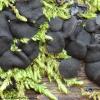
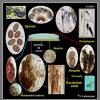
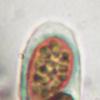
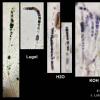
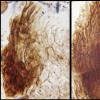
 BELL-MAHONEY-1991-0001.pdf
BELL-MAHONEY-1991-0001.pdf